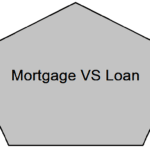Last Updated on June 23, 2025 by admin
Understanding personal loans is essential to distinguishing them from other financial products like lines of credit. A personal loan is typically a fixed amount of money borrowed from a lender, which can be a bank, credit union, or online lender, and it is repaid over a specific term with regular installments.
One of the primary features of personal loans is their fixed interest rates, which means that borrowers know exactly how much their monthly payments will be, allowing for easier budgeting and financial planning.
This stability can be a significant advantage for those who prefer predictability in managing their finances.
Also, personal loans often have fixed repayment terms, varying from a few months to several years, depending on the amount borrowed and the lender’s conditions.
Personal loans are usually unsecured, meaning that borrowers don’t need to put up collateral like a house or car to obtain the loan. This makes them accessible to a broader range of individuals who might not have significant assets. Personal loans can be used for a variety of purposes, such as consolidating debt, financing major purchases, or covering unexpected expenses.
However, since these loans are typically unsecured, they may come with slightly higher interest rates compared to secured loans. Nonetheless, their straightforward structure and flexibility in usage make personal loans an attractive option for those needing a lump sum of money for specific financial needs.
Read: What is considered as good and Bad credit score
Lines Of Credit: Characteristics And Advantages
A line of credit offers a distinct set of characteristics and advantages that make it an appealing financial tool for many individuals. Unlike a personal loan, which provides a lump sum of money that is repaid in fixed installments over a predetermined period, a line of credit functions much more like a credit card. It grants borrowers access to a predetermined amount of funds that they can draw upon as needed, up to a specified limit.
Borrowers are not required to use the entire amount available, and interest is only charged on the portion of the line that is actually used. This can make a line of credit more cost-effective for those who need to cover sporadic, unpredictable expenses or who wish to have a financial safety net in place.
lines of credit often allow for interest-only payments during the draw period, which can ease cash flow concerns. Once funds are repaid, they become available for borrowing again during the term of the agreement, adding to its financial utility. This revolving nature, combined with its flexible use and potentially lower interest rates compared to credit cards, makes a line of credit an attractive option for managing both planned and unplanned financial needs.
Also read: What’s the different between loan and mortgage
Interest Rates: How They Differ Between Personal Loans And Lines Of Credit
Interest rates serve as a pivotal factor distinguishing personal loans from lines of credit, each offering unique financial implications depending on an individual’s borrowing needs and payment strategies.
Personal loans typically come with fixed interest rates, meaning the rate remains constant throughout the duration of the loan. This fixed nature provides borrowers with a sense of predictability and stability, as they can plan for consistent monthly payments, making it easier to manage long-term budgeting.
In contrast, lines of credit generally feature variable interest rates, which can fluctuate over time based on changes in the prime rate or other economic indicators.
While this variability can offer flexibility and potentially lower interest costs during periods of economic stability or decline, it also introduces the risk of increasing costs if interest rates rise. Therefore, borrowers who opt for a line of credit must be prepared for potential fluctuations in their repayment amounts.
Moreover, the initial rates for lines of credit might be lower than those of personal loans, reflecting the lender’s expectation of ongoing access rather than a one-time disbursement. However, the possibility of interest rate increases over the term can offset these initial savings. Borrowers must weigh their appetite for risk against their need for financial certainty when choosing between these two lending options.
Ultimately, understanding these differences in interest rate structures helps individuals make informed decisions that align with their financial goals and risk tolerance.
Repayment Structures: Comparing Personal Loans And Lines Of Credit
When considering the repayment structures of personal loans and lines of credit, several differences emerge that can significantly influence a borrower’s decision.
A personal loan typically comes with a fixed repayment schedule. This involves making regular monthly payments over a predetermined term, which can range from one to several years. The payment amounts are usually consistent throughout the loan term, allowing borrowers to plan their finances with certainty.
This fixed structure can be advantageous for those who prefer predictability and stability in their budgeting, as they know exactly how much they need to pay each month and when the loan will be fully repaid.
In contrast, a line of credit offers a more flexible repayment approach. It functions similarly to a credit card, where borrowers have the option to borrow up to an approved credit limit and are required to pay interest only on the amount they actually use. Minimum monthly payments are often required, based on the outstanding balance, but borrowers have the flexibility to pay more if they choose.
This flexibility can be beneficial for those who anticipate varying financial needs, as they can adjust their repayments according to their cash flow situation. However, the flexible nature of credit lines can also lead to challenges in managing debt, as the lack of a set repayment schedule might result in prolonged debt periods if not managed carefully.
Credit Requirements And Eligibility: Which Option Suits You Better?
When considering personal loans versus a line of credit, understanding the credit requirements and eligibility can help determine which option better suits your financial situation.
Personal loans generally require a strong credit score for approval. Lenders evaluate your credit history, employment status, and income stability to assess your ability to repay the loan. A higher credit score not only increases your chances of approval but can also secure lower interest rates, reducing the overall cost of borrowing.
The fixed repayment schedule of a personal loan can be beneficial for those who prefer structured and predictable payments.
In contrast, lines of credit typically offer more flexibility but come with different credit requirements. While a good credit score can make it easier to obtain a line of credit, the thresholds might be less stringent compared to personal loans.
Financial institutions focus on your debt-to-income ratio, ensuring you have enough disposable income to manage potential debt responsibly. A line of credit is ideal for individuals with variable cash flow, as it allows borrowing as needed within a credit limit, without fixed monthly payments on the unused portion
Ultimately, those with solid credit histories and a preference for predictable payments may find personal loans more suitable. However, individuals seeking flexibility and with moderate credit might benefit more from a line of credit, considering the convenience it affords in financial management.
Read: How to Apply for Personal Loan
Choosing The Right Option: Personal Loan Vs. Line Of Credit
When deciding between a personal loan and a line of credit, it’s essential to evaluate your individual financial needs, repayment capabilities, and overall goals.
A personal loan might be the better option if you’re looking for a lump sum to fund a major expense like a home renovation, medical bills, or debt consolidation. This type of loan offers fixed interest rates and predictable monthly payments, which can make budgeting easier over time.
The certainty of having a set repayment schedule may appeal to those who prefer structured financial planning and wish to avoid the temptation of additional borrowing.
On the other hand, a line of credit provides greater flexibility by allowing you to borrow only what you need up to a predetermined limit, which can be ideal for managing cash flow or covering unexpected expenses.
With a line of credit, you pay interest only on the amount borrowed, which could result in overall cost savings if you don’t need to access the full amount immediately.
However, this flexibility can also lead to variable interest rates and fluctuating monthly payments, requiring more disciplined financial management.
Ultimately, the decision between a personal loan and a line of credit should align with your financial strategy, taking into account your current situation, long-term goals, and comfort with managing varying payment structures and interest rates.


















